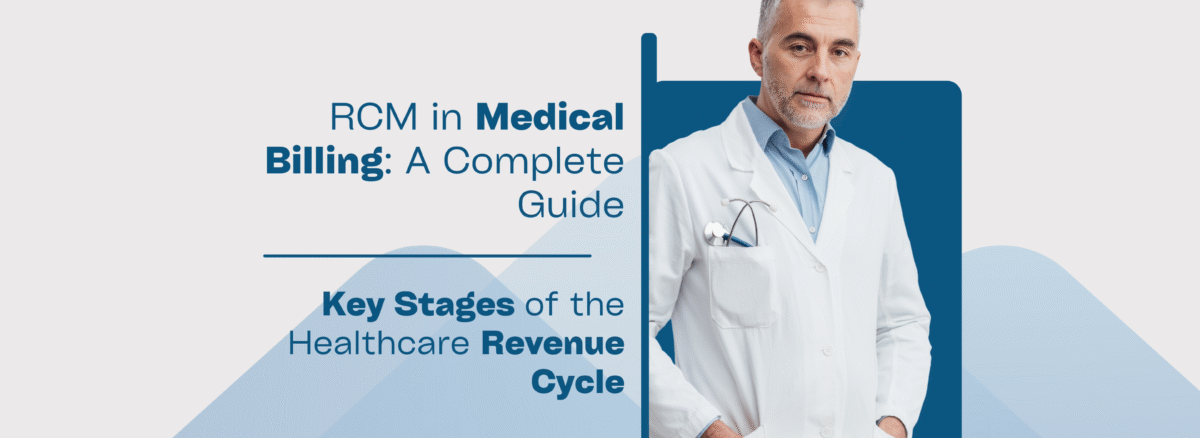In healthcare, money flows through a system known as the Revenue Cycle. This system, also called RCM in medical billing, is how clinics, hospitals, and practices get paid for the care they provide. Without strong RCM, providers face slow payments, denied claims, and financial stress. Understanding how the healthcare revenue cycle works is key to running a successful practice.
What is RCM in Medical Billing?
RCM stands for Revenue Cycle Management. It is the process that starts when a patient books an appointment and ends when the provider gets paid in full. This journey is often called the patient-to-payment process.
In simple words, RCM is how healthcare providers track services, create claims, send them to insurance, and collect payments from both insurance companies and patients.
Key Stages of the Healthcare Revenue Cycle
The healthcare financial cycle has several important steps:
- Patient Scheduling and Registration
Collecting correct details like name, insurance, and medical history to avoid errors later. - Insurance Verification
Making sure the patient’s insurance covers the planned services. - Medical Coding and Charge Capture
Every service provided is turned into a code, which becomes the base for billing. - Claims Submission
Sending claims to insurance companies for approval. This is the heart of the claims management cycle. - Payment Posting
Recording payments received from insurance or patients. - Denial Management
If a claim is rejected, staff correct errors and resubmit. - Patient Billing and Collections
After insurance pays, the remaining balance is billed to the patient.
This full flow is also known as end-to-end medical billing.
Why Effective RCM Matters
- Faster payments: Reduces delays from insurance and patients.
- Lower denials: Accurate claims mean fewer rejections.
- Better cash flow: Steady income helps providers grow.
- Improved patient trust: Clear billing builds stronger relationships.
Common Challenges in RCM
Even the best systems face issues. Some common challenges in medical revenue management include:
- Coding errors that lead to claim denials.
- Insurance rules that are complex and constantly changing.
- Patient billing confusion, where patients struggle to understand their responsibility.
- Slow follow-ups on denied or pending claims.
How Technology Supports RCM
Modern healthcare uses technology to simplify the financial workflow in healthcare.
- Medical billing software reduces human errors.
- Automation helps with claim submissions and reminders.
- Analytics tools track where money is stuck.
- AI systems predict denials before they happen.
These tools save time and improve accuracy in the practice revenue cycle.
Best Practices for Strong RCM
To succeed with healthcare revenue cycle management, providers can follow these steps:
Train staff on accurate coding and billing.
Verify insurance before services are given.
Track key metrics like claim denial rates and collection times.
Keep communication clear with patients about costs.
Partner with experts for complex billing cycle management.
Future of RCM in Healthcare
The future of RCM is moving toward automation and patient-friendly billing. Trends like AI-powered coding, real-time claim tracking, and digital payment options will make the healthcare financial cycle faster, more transparent, and easier for both providers and patients.
Partner with Zanexmed for Stronger RCM
Managing the healthcare revenue cycle is not just about billing—it’s about protecting your practice’s financial future. At Zanexmed, we specialize in reducing claim denials, streamlining billing processes, and helping providers get paid faster. Whether you run a small clinic or a large healthcare practice, our end-to-end medical billing solutions ensure accuracy, compliance, and steady cash flow.
Conclusion
RCM in medical billing is the backbone of financial health for hospitals, clinics, and practices. From the first patient appointment to the final payment, every step in the claims management cycle matters. With strong systems, advanced technology, and best practices, providers can achieve smooth end-to-end medical billing while giving patients a better experience.
Ready to grow your revenue? Contact Zanexmed today and discover how we can transform your medical billing into a hassle-free, profitable system.


